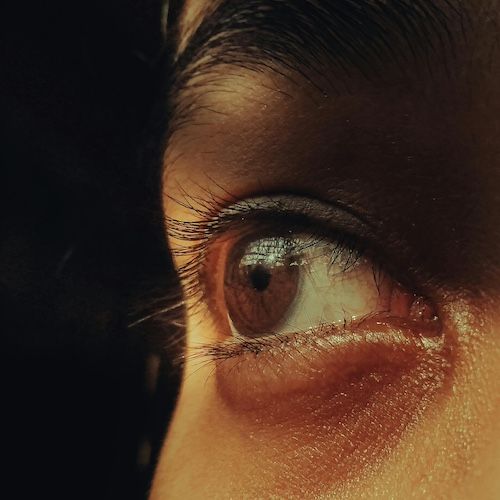News
Article
COVID-19 Vaccination May Raise Risk of Uveitis Recurrence
Author(s):
Both vaccine type and period mediated the risk of uveitis after COVID-19 vaccination in patients with a history of the ocular inflammatory event.
Credit: Nishant Das/Pexels

A new cohort study provided insight into the association between COVID-19 vaccination and uveitis, supporting an elevated risk after the immunization, with both vaccine type and post-vaccination period mediating the risk.1
The cumulative incidence of uveitis was 8.6% and 16.8% during the 3-month and 1-year periods, respectively, indicating more than half of the uveitis incidences occurred shortly after vaccination. All 4 vaccine types were correlated with increased risk after the first dose.
“These results emphasize the importance of vigilance and monitoring for uveitis in the context of vaccinations, including COVID-19 vaccinations, particularly in individuals with a history of uveitis,” wrote the investigative team, led by Seong Joon Ahn, MD, PhD, department of ophthalmology, Hanyang University Seoul Hospital.
Given the scope of the COVID-19 pandemic, COVID-19 vaccines represented a breakthrough in efforts to combat the ongoing disease.2 Vaccines, including recombinant messenger RNA (mRNA) vaccine, adenovirus vector-based vaccine, and inactivated vaccine, received emergency use authorization from global regulatory agencies. An ongoing conversation surrounding vaccine safety led to heightened attention on short-term and long-term adverse events related to widespread vaccine use.
While rare, numerous ocular adverse events have been reported after vaccination, including uveitis and retinal vascular occlusion, although a causal link was not established.3 Among those with a history of uveitis, it is crucial to understand the risk of COVID-19 vaccination on uveitis, particularly its effect on the recurrence of the disease.
Ahn and colleagues noted the timing of vaccine administration and postvaccination is important for a comprehensive understanding of the temporal association between COVID-19 vaccination and uveitis.1 The team assessed the Korean National Health Insurance Service (NHIS) and Korea Disease Control and Prevention Agency (KDCA) databases, including data on approximately 500,000 individuals with a history of uveitis and their vaccination details.
The retrospective, population-based cohort study included individuals with uveitis, diagnosed between January 2015 and February 2021 in South Korea. After the exclusion of those without COVID-19 vaccination or with SARS-CoV-2 infection, the analysis included individuals with a history of uveitis had received ≥1 dose of a mRNA (BNT162b2 [Pfizer-BioNTech] or mRNA-1273 [Moderna]) or adenovirus vector-based (ChAdOx1 [AstraZeneca] or Ad26.COV2.S [Janssen]) COVID-19 vaccine.
A diagnosis of uveitis was categorized by onset (early, within 30 days, or delayed) and type (anterior or nonanterior). Overall, the study population included 473,934 individuals (mean age, 58.9 years; 51.3% female) with documented COVID-19 vaccination
Upon analysis, the cumulative incidence of postvaccination uveitis was 8.6% at 3 months, 12.5% at 6 months, and 16.9% at 1 year, with most individuals experiencing anterior uveitis type. Overall, Ahn and colleagues identified an increased risk of uveitis in the postvaccination period (hazard ratio [HR], 1.21; 95% CI, 1.19 - 1.24).
An investigation into early- and delayed-onset postvaccination uveitis demonstrated a higher risk in the early-onset period (HR, 1.64; 95% CI, 1.53 - 1.76), but the risk was maintained in the delayed-onset period (HR, 1.18; 95% CI, 1.15 - 1.21), compared with prevaccination periods.
Specifically, those who received the BNT162b2 (HR, 1.68; 95% CI, 1.52 - 1.86), mRNA-1273 (HR, 1.51; 95% CI, 1.21 - 1.89), ChAdOx1 (HR, 1.60; 95% CI, 1.43 - 1.79), and Ad26.COV2.S (HR, 2.07; 95% CI, 1.40 - 3.07) vaccines experienced the highest uveitis risk in the early-onset postvaccination period.
In a linked editorial, Nisha R. Acharya, MD, MS, F.I. Proctor Foundation, University of California, San Francisco, noted these findings add to the evidence on potential risks of ocular inflammation stemming from COVID-19 vaccination and prove the utility of population-based retrospective study designs in evaluating vaccine-associated events.4
However, Acharya also pointed to the inherent limitations of the study design, including reliance on diagnostic coding for a uveitis outcome, not accounting for the healthy vaccinee bias, and a lack of contextualization on the greater risks of being unvaccinated for COVID-19.
“As long as investigators account for the inherent limitations associated with these methodologies and appropriately interpret findings in the context of comprehensive risk discussions, these studies are foundational in helping to guide clinical decisions relating to postvaccine monitoring, counseling, and risk mitigation,” Acharya wrote.
References
- Kim J, Kwon HY, Ahn SJ. COVID-19 Vaccine–Associated Uveitis in Patients With a History of Uveitis. JAMA Ophthalmol. Published online April 25, 2024. doi:10.1001/jamaophthalmol.2024.0973
- Kaur SP, Gupta V. COVID-19 Vaccine: A comprehensive status report. Virus Res. 2020;288:198114. doi:10.1016/j.virusres.2020.198114
- Mahendradas P, Mishra SB, Sangoram R, et al. Ocular manifestations following COVID-19 vaccination. J Ophthalmic Inflamm Infect. 2023;13(1):44. Published 2023 Sep 23. doi:10.1186/s12348-023-00358-x
- Kumar A, Acharya NR. Real-World Vaccine Research and Clinical Practice. JAMA Ophthalmol. Published online April 25, 2024. doi:10.1001/jamaophthalmol.2024.1049




